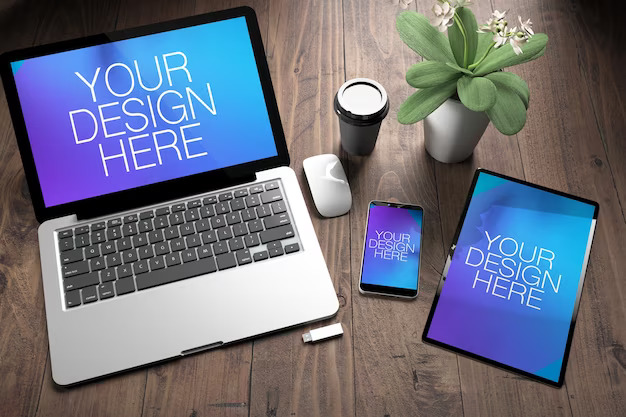
Simplicity emerges as the unsung hero in a space where information overload is now the norm. You didn’t access this blog by mistake because today, you are reading through the art of simplifying design elements, ensuring that users stay focused, engaged, and in control without feeling like they’re deciphering a riddle in a labyrinth.
So, fellow designers, enthusiasts, and anyone with a curious mind, fasten your seatbelts. We’re not just crafting user interfaces but creating digital experiences that resonate, inspire, and make users do a little happy dance. Let’s get started on a journey where every pixel has a purpose, and every button is a cue for a seamless interaction. Welcome to the captivating world of intuitive UI design!
Section 1: The Heartbeat of Intuitive User Interfaces
1.1 Embracing Intuitiveness in UI: Imagine your UI is your favourite dance partner – it knows the moves. It is time to know what takes an interface from merely functional to the kind that makes users think, “Whoa, this gets me!”
1.2 Human-Centered Design Principles: Let’s spill the secret sauce: human-centred design. It’s like conversing with your users, understanding their quirks, and creating an interface that feels custom-tailored for them. Trust me, it’s the golden ticket!
1.3 Cognitive Load and Simplified Design: Simplicity is the superhero in a world drowning in information. We’re breaking down how stripping away the unnecessary helps users focus on what matters without feeling like they’re deciphering a cryptic message.
Section 2: Navigating Best Practices for Intuitive UI Design
2.1 Consistency in Design Elements: Have you ever been on a website and thought, “Wait, did I teleport to a parallel universe?” Consistency is like your UI’s best friend, ensuring everything feels familiar and reducing those head-scratching moments.
2.2 Responsive and Adaptive Design: In a tech world with more screen sizes than you have shoes (probably), your UI needs to be the ultimate shape-shifter. Responsive and adaptive design is your wingman, ensuring your interface looks as good on a phone as on a tablet.
2.3 Feedback and User Guidance: Ever pressed a button and wondered if it did anything? We’re spilling the beans on how giving your users a virtual high-five through feedback and guidance boosts their confidence in navigating your digital masterpiece.
Section 3: User Testing and Iterative Design
3.1 Importance of User Testing: It’s time to shine the spotlight on user testing – it’s like a sneak peek into how your users navigate the digital realm. Get ready to observe, learn, and tweak based on the real MVPs – your users.
3.2 Iterative Design Process: Design is an ever-evolving dance, not a rigid robot. Embracing iteration means you’re in a constant state of improvement. It’s like fine-tuning your UI based on real-world feedback, improving it with every spin.
Section 4: Balancing Aesthetics and Functionality
4.1 Aesthetic Appeal in UI Design: Looks do matter – we’re not here to argue with that. Aesthetics set the stage for a delightful user experience, making your UI the head-turner in the digital room.
4.2 Prioritizing Functionality: While looks get the attention, functionality steals the show. We’re talking about keeping the balance between a visually stunning UI and one that’s a powerhouse of functionality – because your UI should look good and kick butt.
And there you have it, a guide to crafting user interfaces that users won’t just use but will fall in love with. It’s not about the pixels; it’s about creating a digital experience that feels like a conversation, a dance, and a work of art. So, fellow designers, go forth and create UI magic! Happy designing!